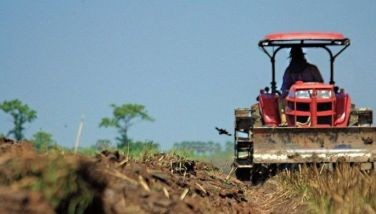Tree bark can absorb water pollutants — study
September 10, 2006 | 12:00am
Here’s one option that those involved in containing the oil spill in Guimaras can consider – use tree barks.
Regarded as wastes in industrial and tree plantations, tree barks can be used to clean polluted water, according to the Los Baños-based Forest Products Research and Development Institute (FPRDI).
"Barks have tanning, linings, organic acids, and cellulose that can absorb or trap heavy metals in solution," said FPRDI chemist Jennifer Tamayo. "These have the potential to substitute for costly synthetic absorbents presently imported by the wastewater treatment industry at about $8 million a year."
Tamayo studied the potential of the barks of eight tree species (mangium, bagras, river red gum, moluccan sau, gubas, kaatoan bangkal, raintree, and yenane) to trap ions of lead and chromium present in the wastewater of a steel galvanizing plant. Chromium causes biological mututions while lead causes kidney and liver cancer.
She said that the Philippines produces a lot of waste barks because it has about 653,000 hectares of industrial tree plantations established by both government and private groups.
Waste bark can remove 96 to 100 percent lead and 84 to 90 percent chromium from wastewater, as found in her studies while pursuing a master of science in chemistry at UP Los Baños under the guidance of Dr. Maxima E. Flavier. – Rudy A. Fernandez
Regarded as wastes in industrial and tree plantations, tree barks can be used to clean polluted water, according to the Los Baños-based Forest Products Research and Development Institute (FPRDI).
"Barks have tanning, linings, organic acids, and cellulose that can absorb or trap heavy metals in solution," said FPRDI chemist Jennifer Tamayo. "These have the potential to substitute for costly synthetic absorbents presently imported by the wastewater treatment industry at about $8 million a year."
Tamayo studied the potential of the barks of eight tree species (mangium, bagras, river red gum, moluccan sau, gubas, kaatoan bangkal, raintree, and yenane) to trap ions of lead and chromium present in the wastewater of a steel galvanizing plant. Chromium causes biological mututions while lead causes kidney and liver cancer.
She said that the Philippines produces a lot of waste barks because it has about 653,000 hectares of industrial tree plantations established by both government and private groups.
Waste bark can remove 96 to 100 percent lead and 84 to 90 percent chromium from wastewater, as found in her studies while pursuing a master of science in chemistry at UP Los Baños under the guidance of Dr. Maxima E. Flavier. – Rudy A. Fernandez
BrandSpace Articles
<
>
- Latest
Latest
Latest
April 10, 2024 - 5:12pm
By Ian Laqui | April 10, 2024 - 5:12pm
March 4, 2024 - 3:32pm
By Ian Laqui | March 4, 2024 - 3:32pm
March 4, 2024 - 2:12pm
By Kristine Daguno-Bersamina | March 4, 2024 - 2:12pm
February 13, 2024 - 7:24pm
By Gaea Katreena Cabico | February 13, 2024 - 7:24pm
February 13, 2024 - 7:17pm
By Ian Laqui | February 13, 2024 - 7:17pm
Recommended





























